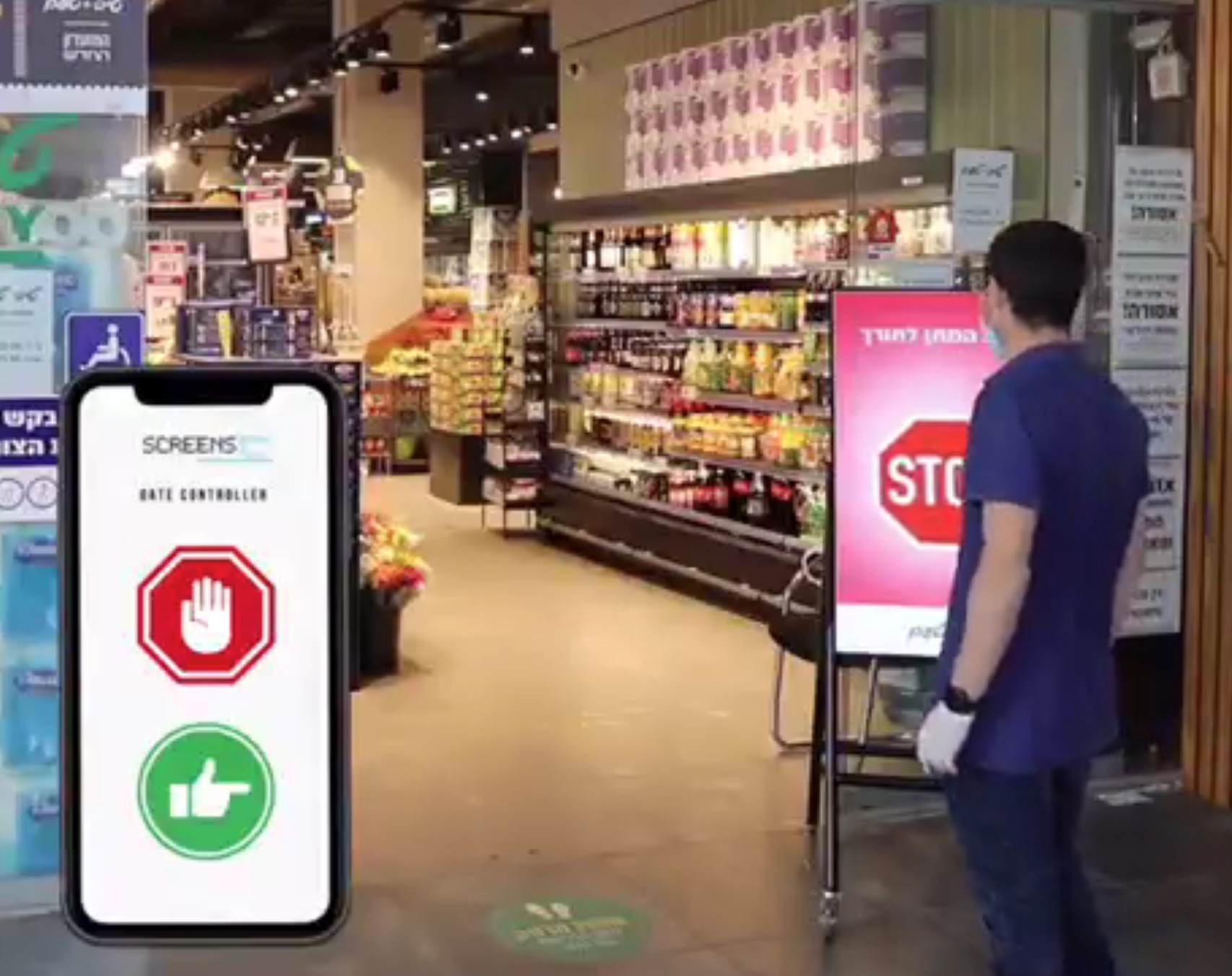
Digital Signage Solution Tweaked To Enforce Social Distancing At Retail
April 20, 2020 by Dave Haynes
When I load up with my sanitizer and wipes, and grab my mask, to go out on a grocery or hardware run, I almost invariably end up in a line-up outside the store – with social distancing markers on the sidewalk and a cashier turned bouncer controlling access at the door.
One person leaves, and then one person goes in.
It’s not a terribly efficient process, in terms of staffing, and the Israeli digital signage solutions provider Screens-TV has put in a solution for retail that is an interesting spin on using screens and, I assume, sensors, to streamline the process.
The company, which also has an office in Athens, worked with the Israeli CMS software firm NoviSign on an easel-mounted digital display that runs an attract loop outside a store, but switches over to access control messaging when a shopper approaches.
The Linkedin video below shows how it works. The video doesn’t fully show what’s going on here, but infers that someone who is in view of the entry can use a touchscreen to change the message and OK entry. I am thinking there’s a sensor that fires up the STOP message.
You could imagine how this could be more automated using sensors at stores, like grocery and big box. It would be particularly good at stores that now enforce separate entry and exit areas – instead of asking someone to watch both doors and steadily manage control.
At places like a Costco, that have had to limit access and throughput, lines could get pretty long outside, pretty quickly. Those stores inherently do some access control because you need a member card to get it, but those people are just at the main entry. At a Costco or busy mass merch retailer, camera-based density sensors could measure line-ups and kick out numbers to screens outside that let shoppers know estimated line-up times (and put that online and for phone apps), but also put that message on back of house screens for store ops, so they can make decisions about opening extra cash lanes, and so on.
The challenge with marketing these kinds of access controls is raising awareness with retail and other facility operators about what this sort of thing can do, and probably most of all, ensuring buyers them that it is not wildly complicated or expensive to put in place and run.
All of the components – high-bright displays, software that supports triggering and sensors – are widely available and used, and even the outdoor-ready displays are growing reasonable in cost. A basic system, depending heavily on the display and its need for brightness and rugged enclosure, should not cost a bundle.
This is not bulletproof. People can ignore screens. But it is an interesting approach to solving a problem.



Leave a comment